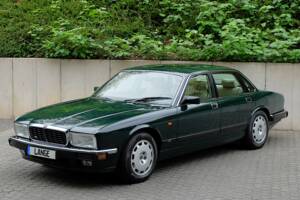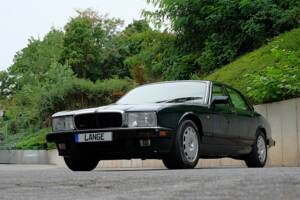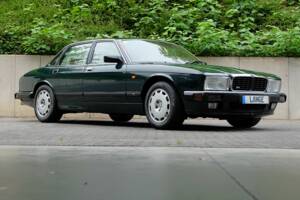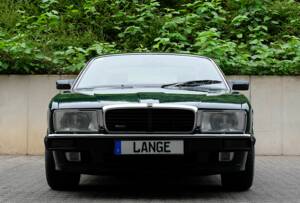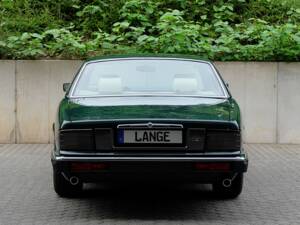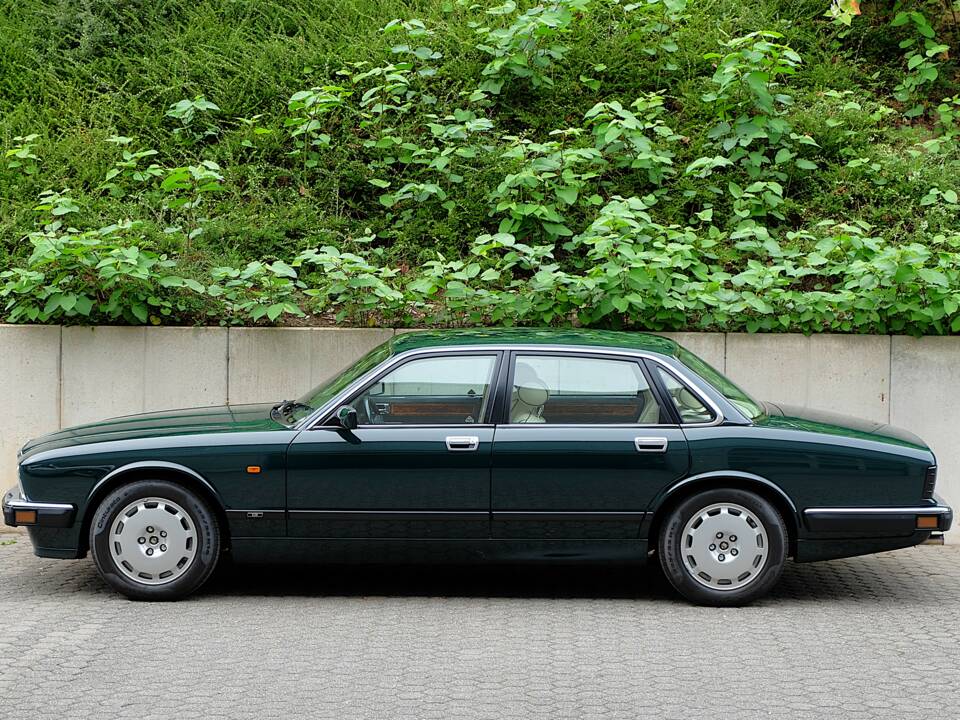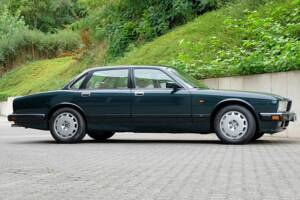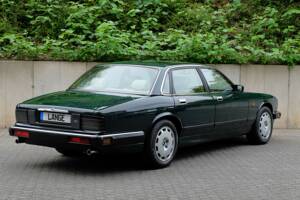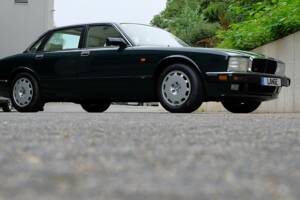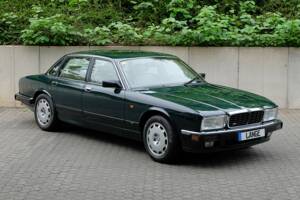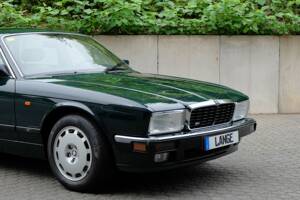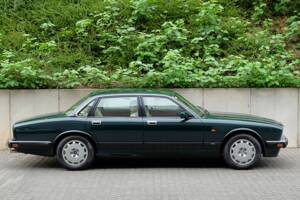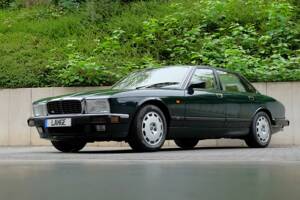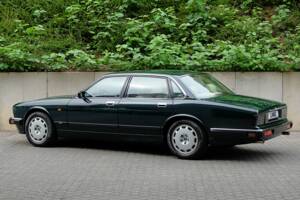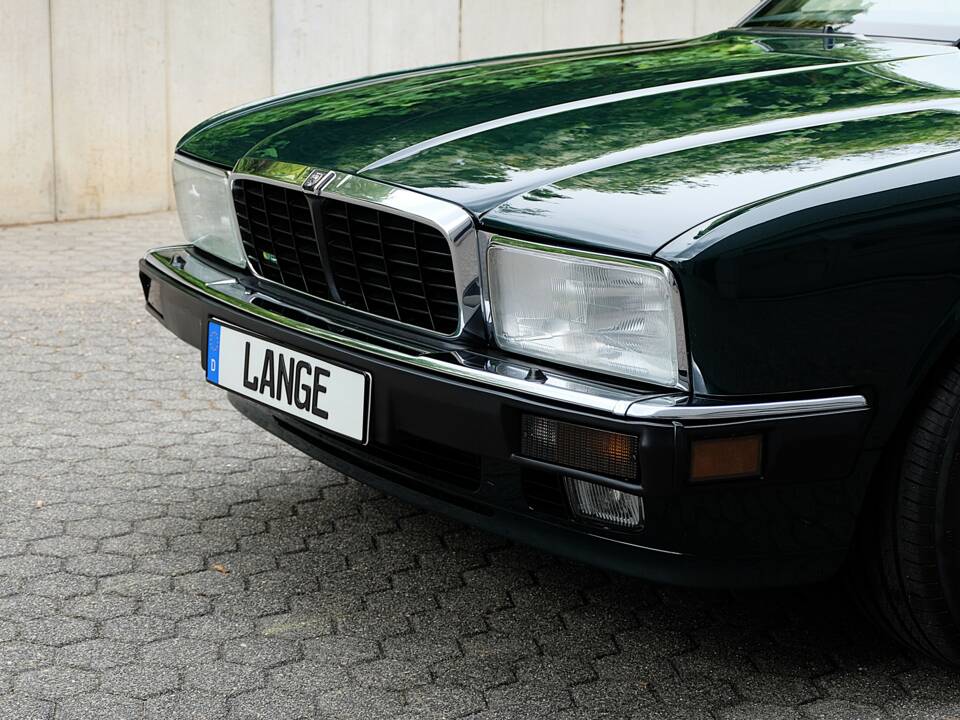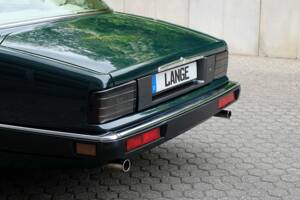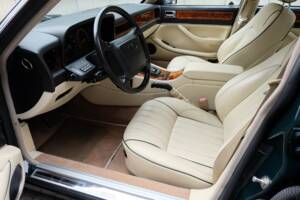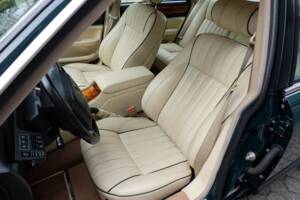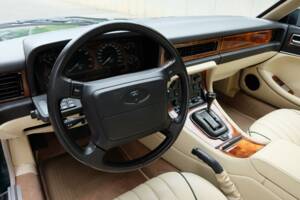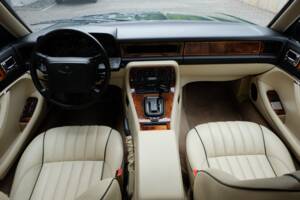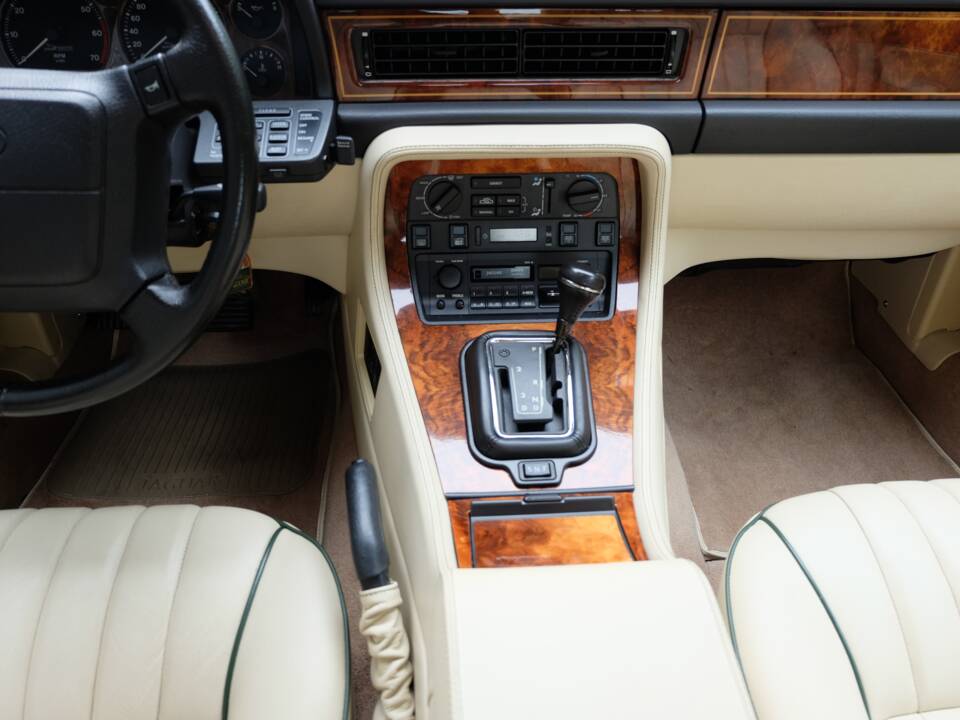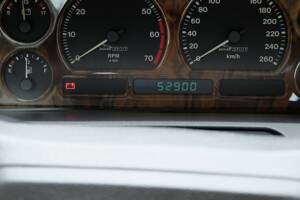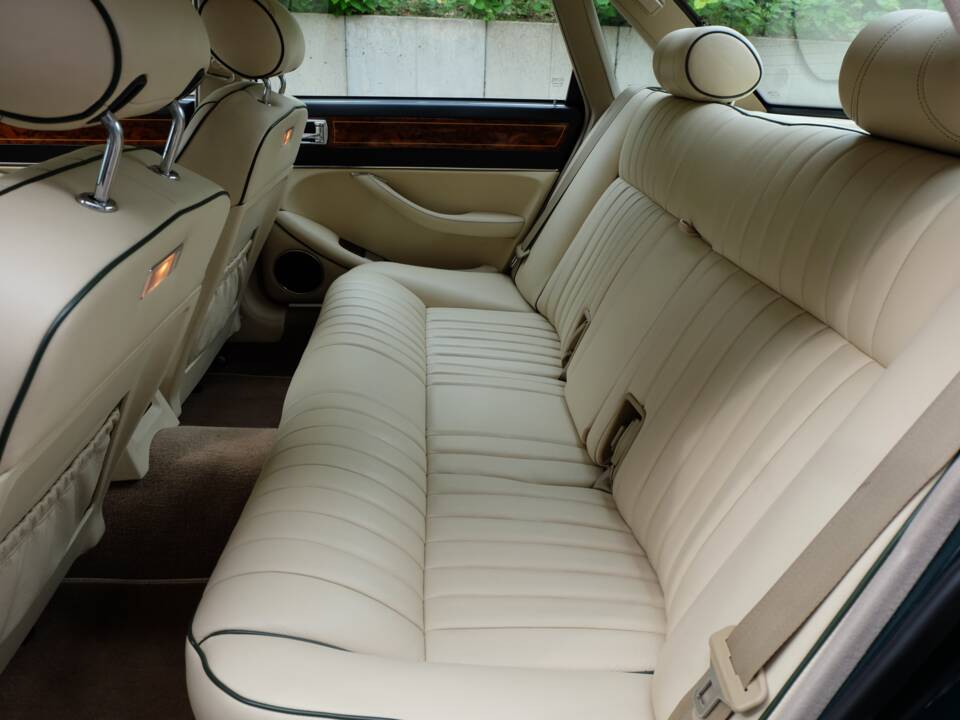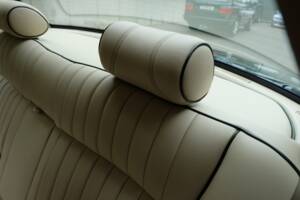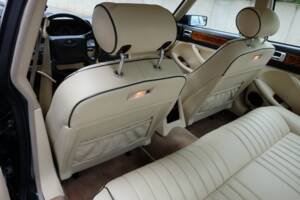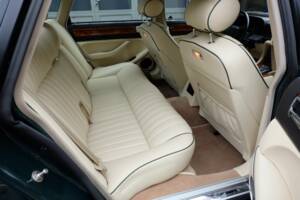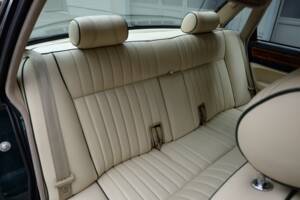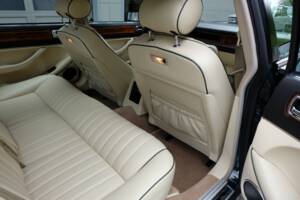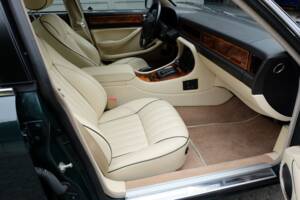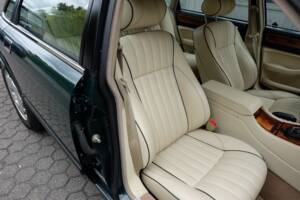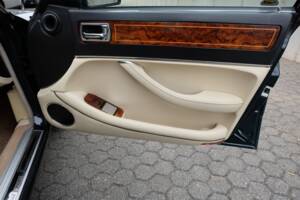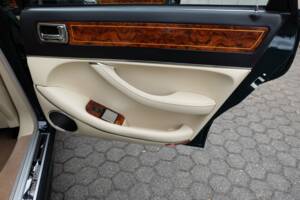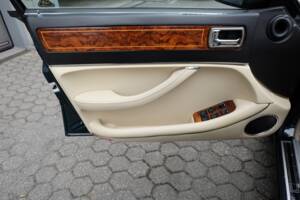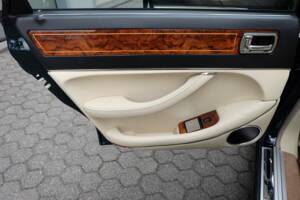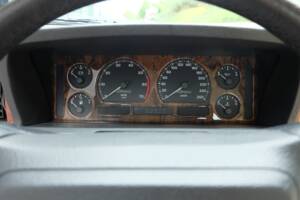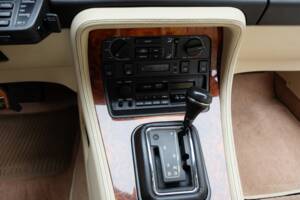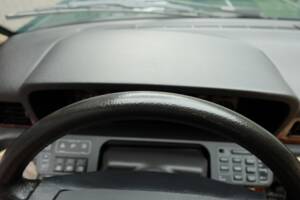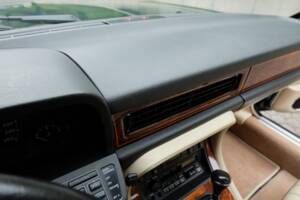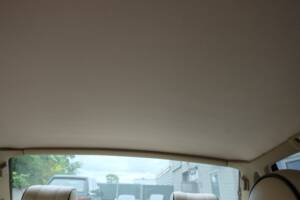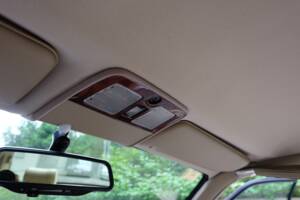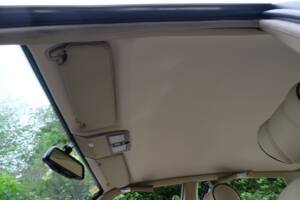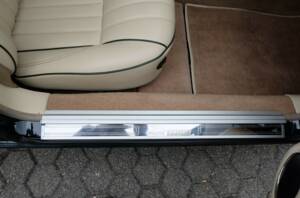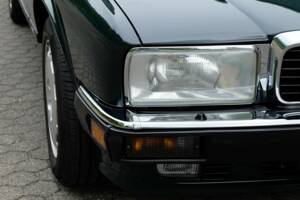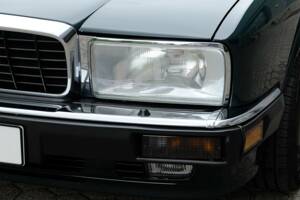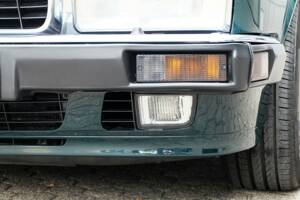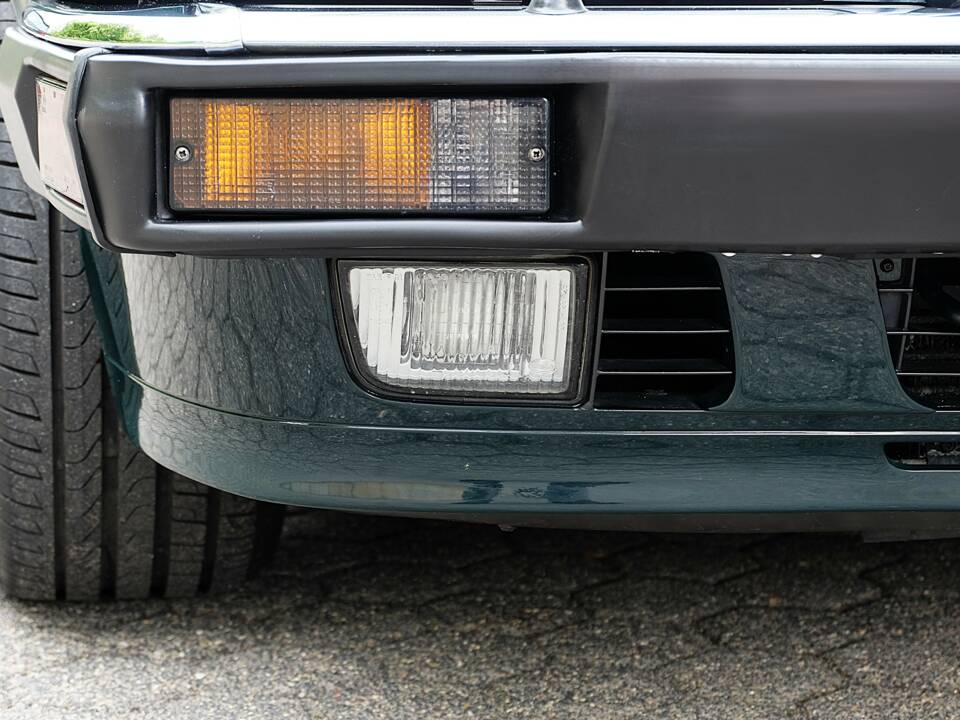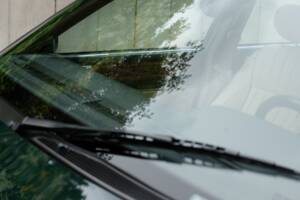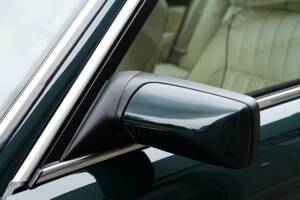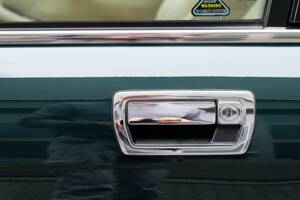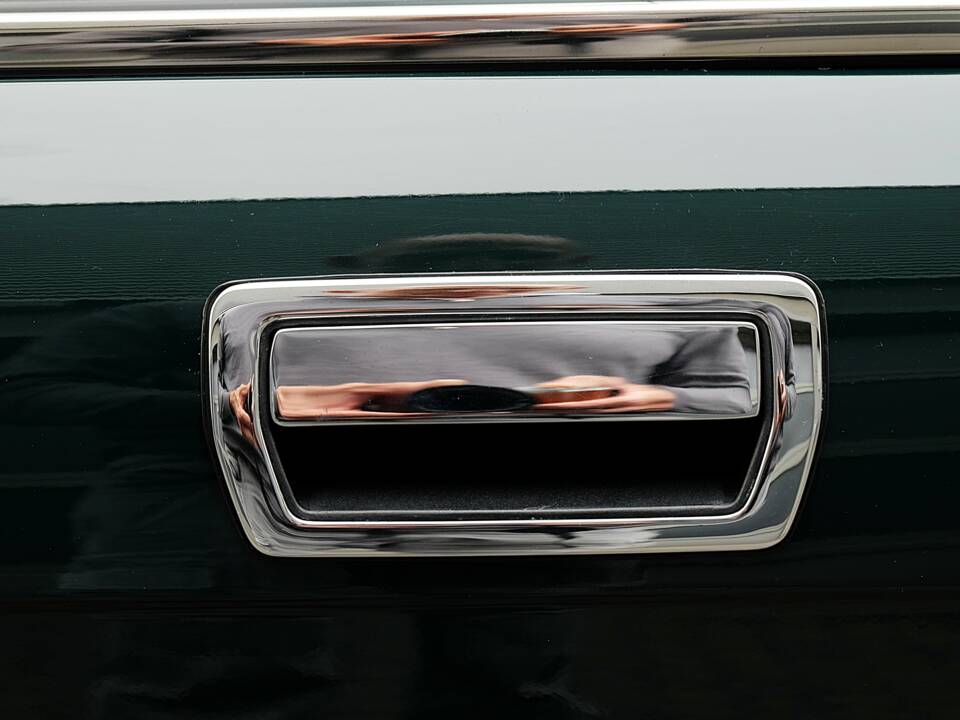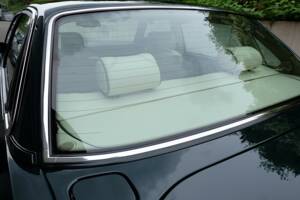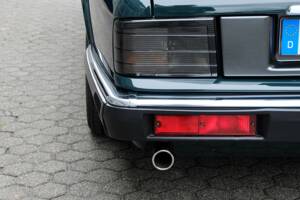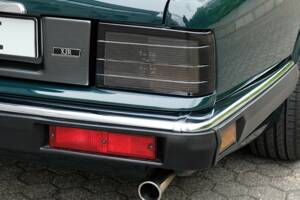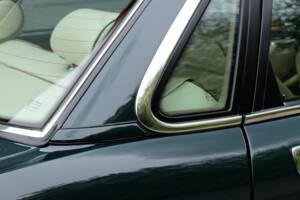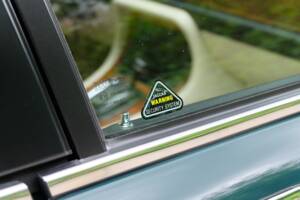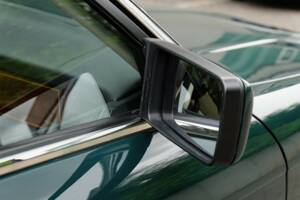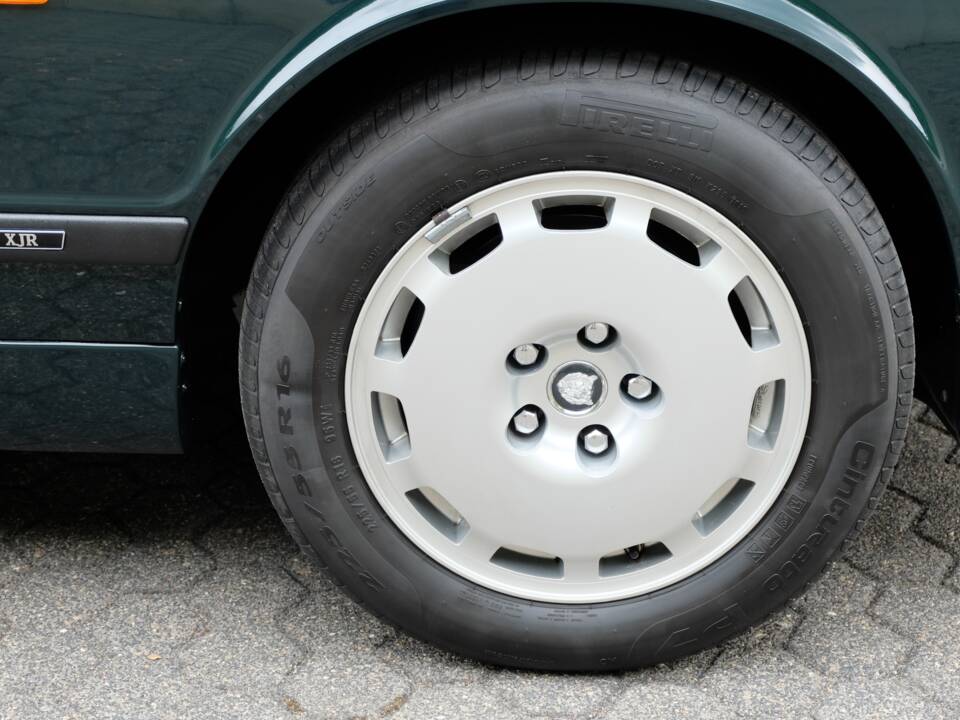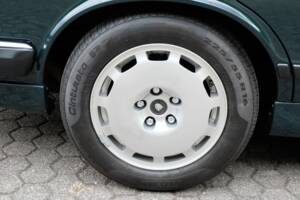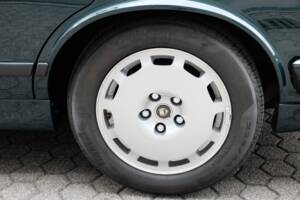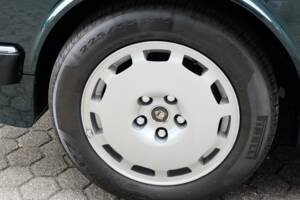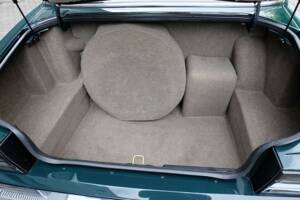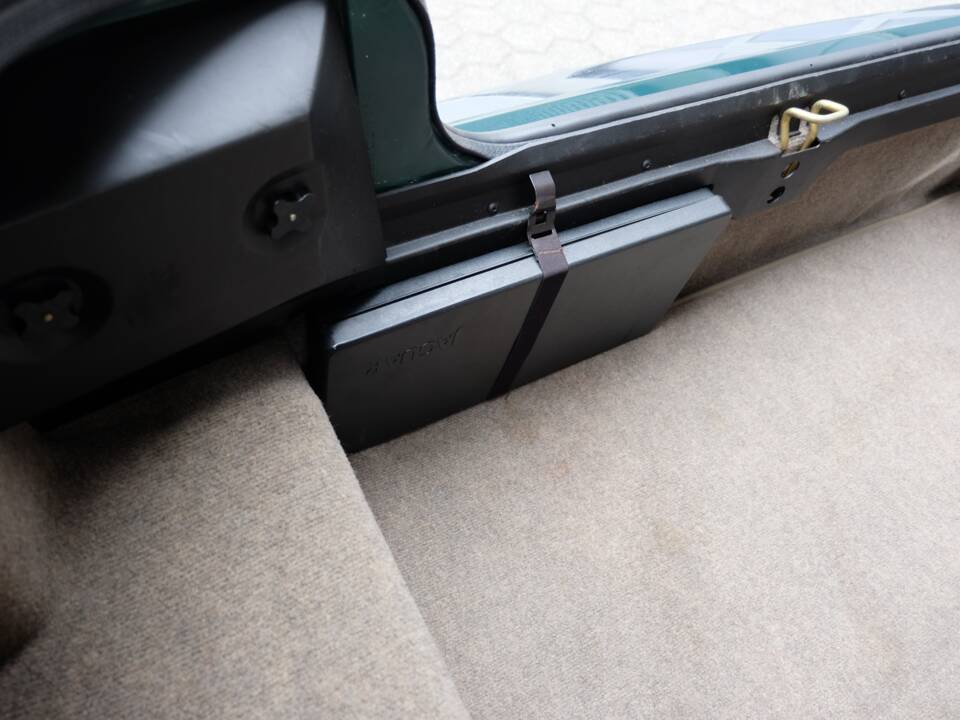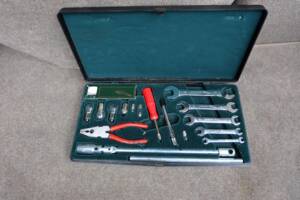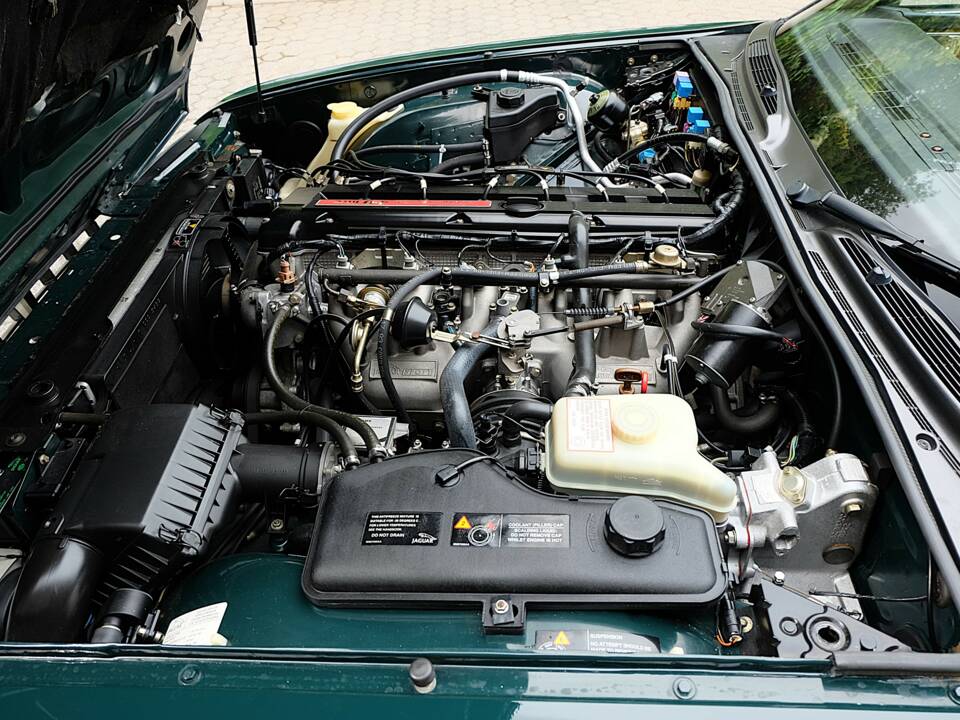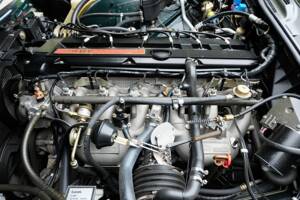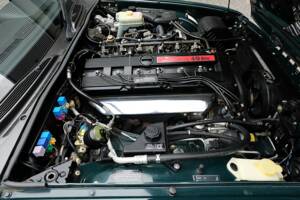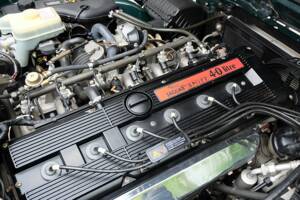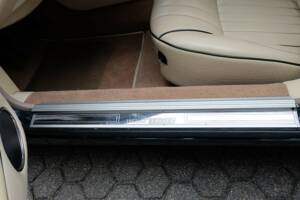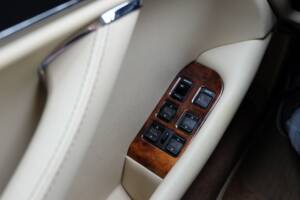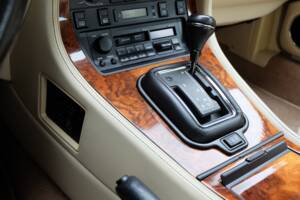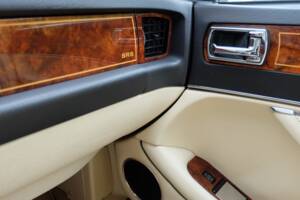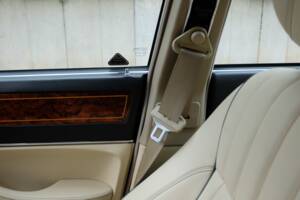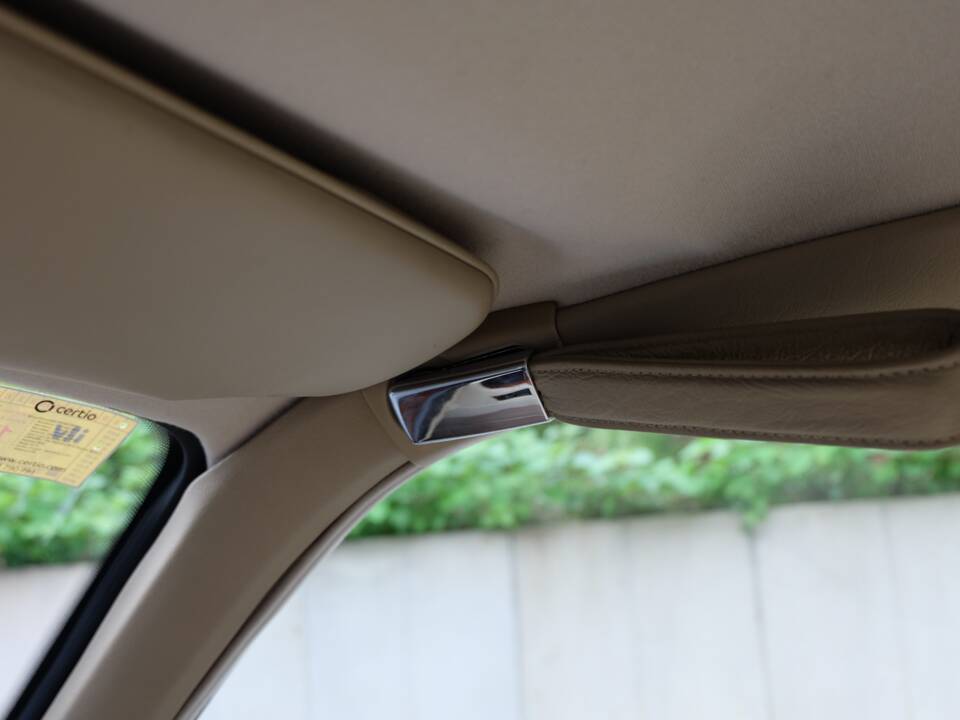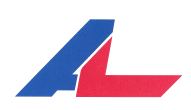1993 | Jaguar XJ 40 (XJ-R)
Like-new Jaguar XJ-R in immaculate condition!!!!
Like-new Jaguar XJ-R in immaculate condition!!!!
Todos los servicios para este vehículo
Descripción
This Jaguar XJR 4.0 is accident free and 100% rust-free. It had two Spanish owners and one owner in Belgian. All of them where collectors and treated the car with care and love. It was never damaged and always serviced. It is in- and outside like new, no blemishes, no dents, no scratches. The Magnolia leather is soft, never retouched and without stains or cracks or scratches. No sun damage on the car as well, it was always garaged. The last owner replaced the rear lamps with new old stock units because this are always fading in color. The car drives like a Jaguar XJR should drive, everything works. The car smells like new and the aroma of the leather is beautiful. The car is pure class and elegance. The color combination is perfect for the car and gives it a very distinguished look.
Our XJR is one of the last cars built. It has the facelift and all upgrades, inclusive the Airbags for driver and front passenger.
To find a XJ40 as XJR is this perfect condition is impossible, this car are so rare and it will be the rare possibility to get one of them. We will perform before delivery a fresh service and MOT.
The Jaguar XJ40 is a luxury saloon (sedan) produced by Jaguar Cars between 1986 and 1994. It was the second generation of the XJ6 line and represented a major technological and design shift for Jaguar at the time.
Overview
- Production years: 1986–1994
- Assembly: Coventry, England
- Predecessor: Jaguar XJ Series III
- Successor: Jaguar X300 (introduced in 1994)
- Body style: 4-door saloon
- Layout: Front-engine, rear-wheel-drive
Engines and Performance
The XJ40 was introduced with Jaguar’s AJ6 inline-six engine, which replaced the old XK straight-six.
Common engine options included:
- 2.9 L I6 (AJ6) – early base model (later replaced)
- 3.2 L I6 (AJ6) – later base option (more refined)
- 3.6 L I6 (AJ6) – early high-end version
- 4.0 L I6 (AJ6) – later high-end and most popular version
- 6.0 L V12 (HE) – available from 1993 in the XJ12 (very rare)
Transmission:
- 5-speed manual (rare)
- 4-speed automatic (most common)
Technology
For its era, the XJ40 was considered quite advanced:
- Digital dashboard (in early models, later replaced with analog due to reliability issues)
- Self-leveling rear suspension
- Advanced electronics for climate control and trip computers
Design
- Sharper, more modern body than the Series III it replaced.
- Rectangular headlights (a first for a Jaguar saloon) for the Sovereign- und Daimler-Variants
- Squared-off boot and simpler, cleaner lines.
- Interior featured real wood veneer and leather — classic Jaguar luxury.
Legacy
The XJ40 marked a major transition for Jaguar — it was the first model largely developed under Jaguar’s independence from British Leyland, and later, under Ford ownership. It’s now gaining appreciation among classic car enthusiasts for its distinctive 1980s design, smooth ride, and inline-six refinement.
The XJR History
The first saloon car to bear the XJR name might not have been supercharged, but that doesn’t stop it being a true sports saloon
To say the company was known for its sports saloons, Jaguar by the 1980s had settled into making cars that were targeted more toward the fat cat than the cool cat. The XJ6 had become rather more golf club than squash club, and the **XJ-S **– while it retained some sporting image – appealed to exactly the same buyers as the E-type had. Not the same social type, but the very same people, 20 years on and comfortably into late middle age.
But Tom Walkinshaw felt that Jaguar could regain the image it had had. Described by Jaguar’s former chair Sir John Egan in his 2015 autobiography Saving Jaguar as ”part tornado, part rugby front-row forward and part mystical leprechaun”, Walkinshaw had been competing in the BTCC since 1974 when he won his class in a Ford-supplied Capri.
In 1981, he approached Jaguar with a proposition – he could win the European Touring Car Championship in an XJ-S if they would sponsor the project. By 1982 he took a win and the sponsorships increased – by 1984 that had become victory in the driver’s championship. Tom Walkinshaw would also help Jaguar win the World Sports Car Championship in 1987, 1988 and 1991.
But in 1984 he had begun to capitalise on his racing victories by offering upgrades for Jaguar road cars, sold under the TWR JaguarSport brand. Bigger wheels, blueprinted engines, better exhausts, suspension and steering tweaks sharpened up the XJ-S and TWR expanded into providing similar options for the Series 3 and subsequent XJ40 saloons. Sales were through just 14 approved Jaguar dealers, and the TWR additions were priced separately.
By 1988 Jaguar had realised there could be a real market for this type of upgrade, and a subsidiary company called JaguarSport Ltd was set up at a cost of £5million as a 50/50 joint venture between TWR and Jaguar, with Sir John Egan as Chairman and Tom Walkinshaw in overall charge as Managing Director.
“The principal aim,” said Walkinshaw in *Autocar’s *18 May 1988 issue, “will be to produce limited volumes of uniquely styled, high performance cars, which will help broaden the marque’s appeal to customers who require their Jaguars to have more overt sporting characteristics. Eventually we aim to sell worldwide and have a capacity of around 2500 JaguarSport cars each year.” John Egan supported this, as “a logical development of our highly successful motorsport relationship. It will enable us to apply the experience we have gained on the world’s racing circuits to develop Jaguars aimed at the more specialised requirements of the enthusiast.”
As before, cars would be shipped from Jaguar’s Browns Lane base to TWR in Bloxham, Oxfordshire and would be converted into roadgoing sports specials. Thus were the official **JaguarSport **XJR-S and JaguarSport XJR models born. Launched at the 1988 Birmingham Motor Show at an initial cost of £38,500, the XJR was based on the £22,200 XJ40 3.6.
While TWR would sell you a bodykit for your 2.9, this was a different kettle of fish. Where the earlier cars were effectively conversions and could add over £10,000 to the cost of your chosen donor, the XJR was effectively an in-house product available through Jaguar dealers – with its own VIN identifier and a standard specification.
XJR 3.6s were all based upon the XJ6 specification as standard, though fitted with the fully chromed door frames of the Sovereign. The body was enhanced with two revised bumper covers incorporating colour coding and valances, while there was also a subtle spoiler on the bootlid. Inside, there was wood taken from the Sovereign model complete with inlay and door cards borrowed from the range-topping Daimler models. The seats came with stiffer bolsters and a thicker, four-spoke steering wheel was finished, in the same shade as the seats.
Underneath, they came with Pirelli 225/55/16 tyres fitted to big Speedline alloys, along with re-valved steering racks, uprated shock absorbers and anti-roll bars. At this point, no performance upgrades were made to the engine, the XJR 3.6 being predominantly a cosmetic and handling exercise. Just four colour combinations were available from launch – Solent Blue, Arctic Blue and Alpine Green with Magnolia leather, or Tungsten Grey with Doeskin leather.
These cars were short-lived, since the 4.0 engine replaced the 3.6 in the XJ40 range amid a large shakeup in the range which incorporated a new analogue dashboard and other minor improvements.
Early XJR 4.0 cars were cosmetically the same as the 3.6 which came before, with the exception of a wider color palette borrowed from the main range. They also shared the same tweaks under the skin – but the 4.0 had a trump card. It offered engine upgrades – courtesy of the aborted XJ41 development program.
“There’s an interesting little historical quirk with the Tom Walkinshaw cars as far as this story goes,” says former Jaguar technical engineer Martin Joyce. “The first 3.6-litre XJRs had no engine upgrades, but the TWR XJR 4.0 did have some engine work at the top end. The thinking behind these modifications was basically taken from the knowledge we gained from the XJ41 naturally-aspirated engine. I was sent to TWR for the day to outline what we did, and my work was used for the XJR. That’s not to say that 4.0 XJRs used an XJ41 specification engine. The engine is still 98% an XJ40 engine, but the things TWR changed are based on what we learned from the XJ41 to liberate 15bhp or so. We actually liberated more with XJ41, but we had a freer intake and exhaust setup than the XJ40 could use.”
In truth, the XJR 4.0 offered 251,5 PS against the standard car’s 223 PS, though torque remained unchanged at 278lb.ft. The increase was courtesy of a new inlet manifold, revisions to the engine management and a high-lift camshaft.
Further changes would come for the 1992 model year in 1991 with an extensive facelift. The quad headlamps were replaced by Sovereign-spec halogen units, the grille was replaced with a new plastic insert evoking early XJs with horizontal and vertical slats, an infill panel was fitted to the bootlid around the number plate, the bumpers and valances were redesigned and new side skirts were fitted.The wheel design was changed, though it remained the same size. Window frames were now powder coated, though waist rails and gutters remained chrome as per the XJ6. This would be the final iteration of change for the model.
And what else was there in 1993 that could offer the would-be XJR buyer a similar package?
-Audi V8
-BMW M5
-BMW 535i Sport
-Jaguar Sovereign V12
-Mercedes 500E
-Lotus Omega
- Maserati 430
The XJR proves that the existing models could have been targeted at a more youthful market, even if the involvement of TWR and the specification on offer meant that it came at a price.
Today it is a rare car not seen often and gaining apparition like the BMW M5 and the Mercedes E 500.
Detalles del vehículo
Datos del vehículo
- Marca
- Jaguar
- Serie del modelo
- XJ
- Modelo
- XJ 40 (XJ-R)
- Código fabricante
- XJ40
- Primera fecha de registro
- 3/1994
- Año de construcción
- 1993
- Kilometraje (leer)
- 52.900 km
- Número de chasis
- No provisto
- Número de motor
- No provisto
- Número de la caja de cambios
- No provisto
- Coincidencia de números
- Sí
- Número de propietarios
- 3
Detalles técnicos
- Carrocería
- Berlina (4-doors)
- Potencia (kW/CV)
- 185/251
- Capacidad cúbica (cm³)
- 3992
- Cilindro
- 6
- Puertas
- No provisto
- Manejo
- Izquierda
- Caja de cambios
- Automático
- Marchas
- No provisto
- Engranaje
- Trasero
- Freno delantero
- No provisto
- Freno trasero
- Disco
- Combustible
- Gasolina
Configuración individual
- Color exterior
- Verde
- Color según fabricante
- Alpine Green Pearl
- Dirección asistida
- Sí
- Cierre centralizado
- Sí
- Ventanas eléctricas
- Sí
- Color interior
- Beige
- Material interior
- Cuero
- Asientos con calefacción
- Sí
- Aire acondicionado
- Sí
- ABS
- Sí
- Bolsa de aire
- Sí
- Control de crucero
- Sí
Condición, registro y documentación.
- Tiene peritaje
- Condición
- Informe de inspección del libro
- ITV
- ITV hasta
- 10/2027
- Matrícula histórica
- Matriculado
- Listo para conducir
- Sin accidentes
